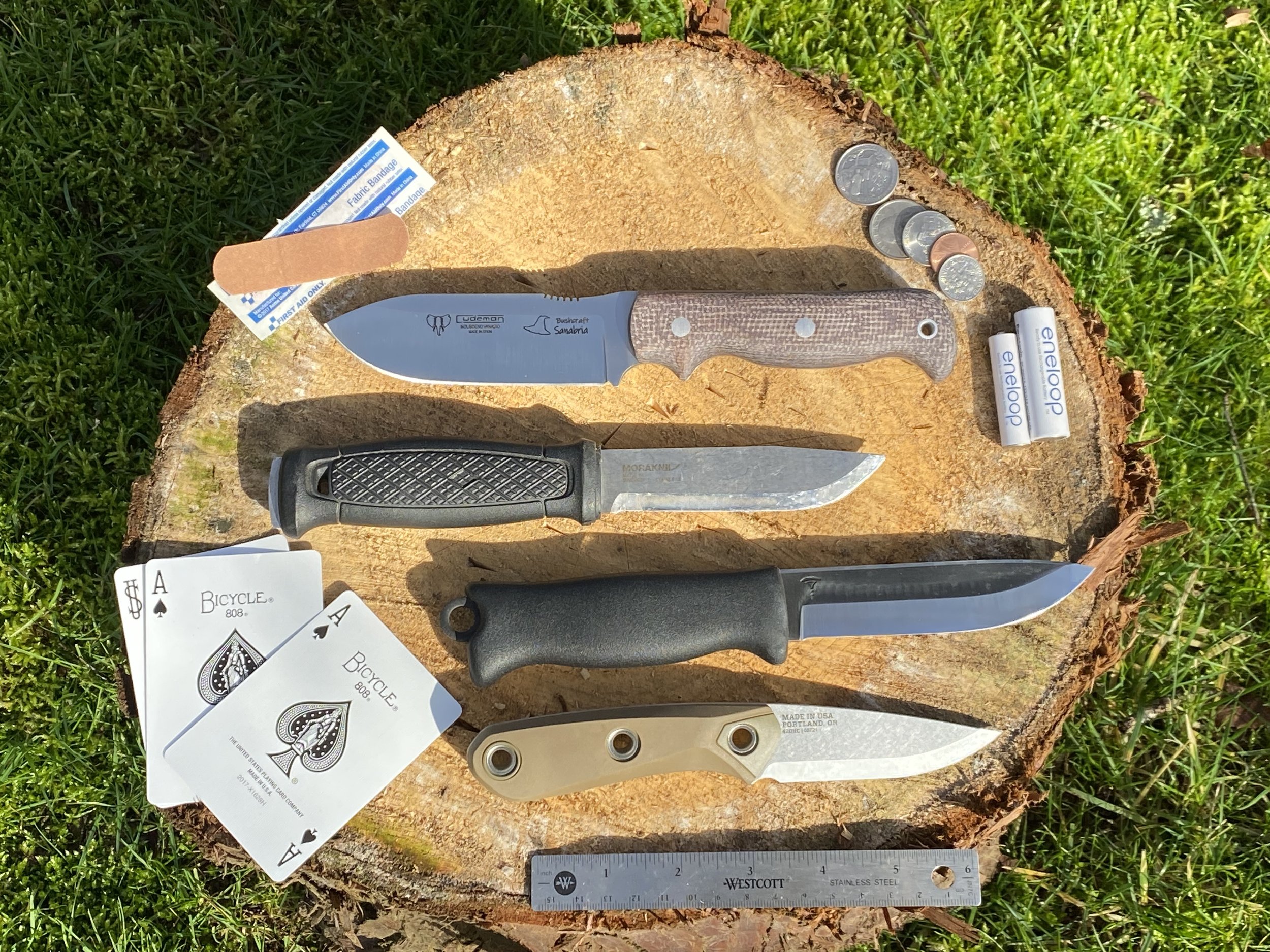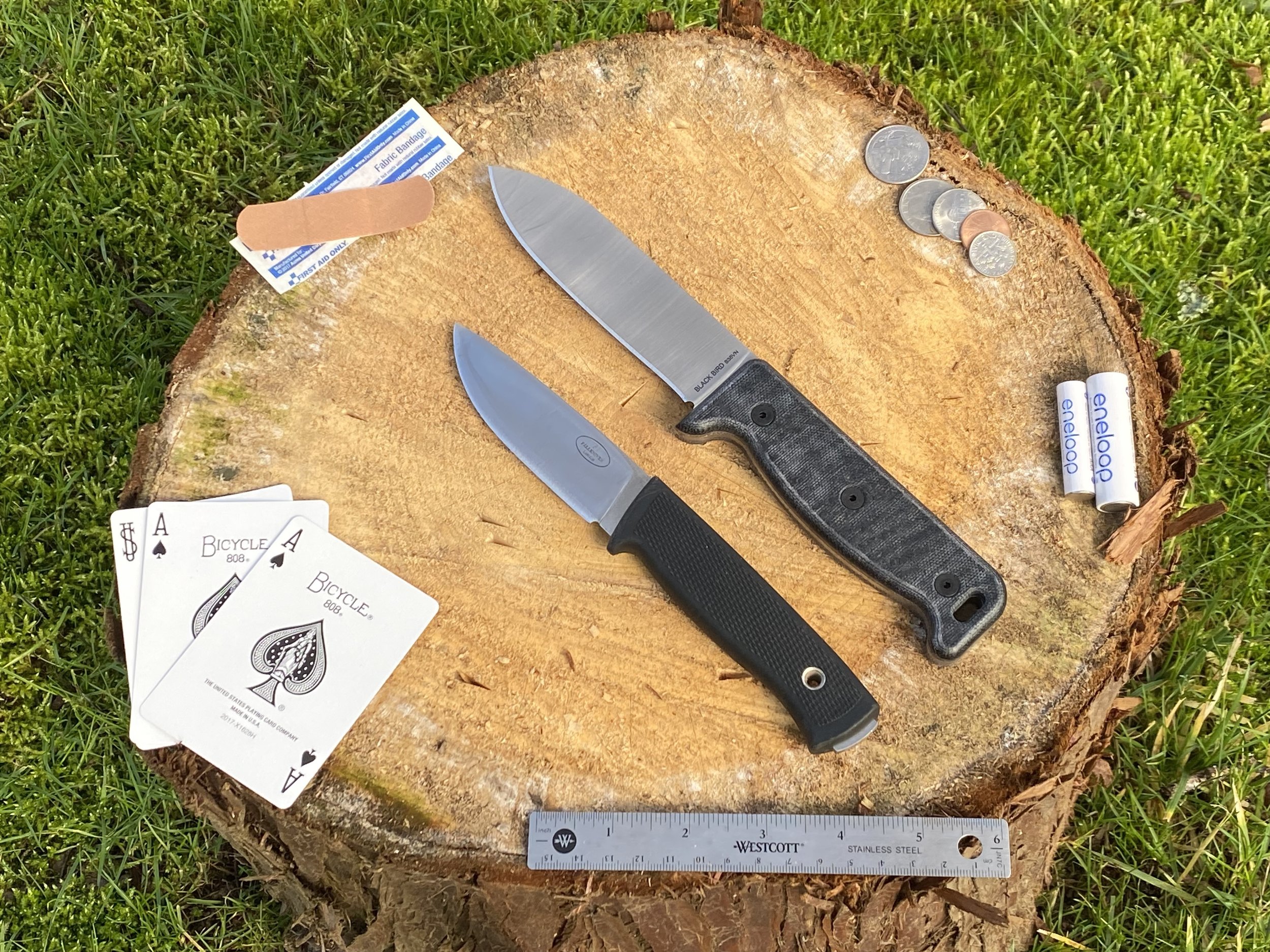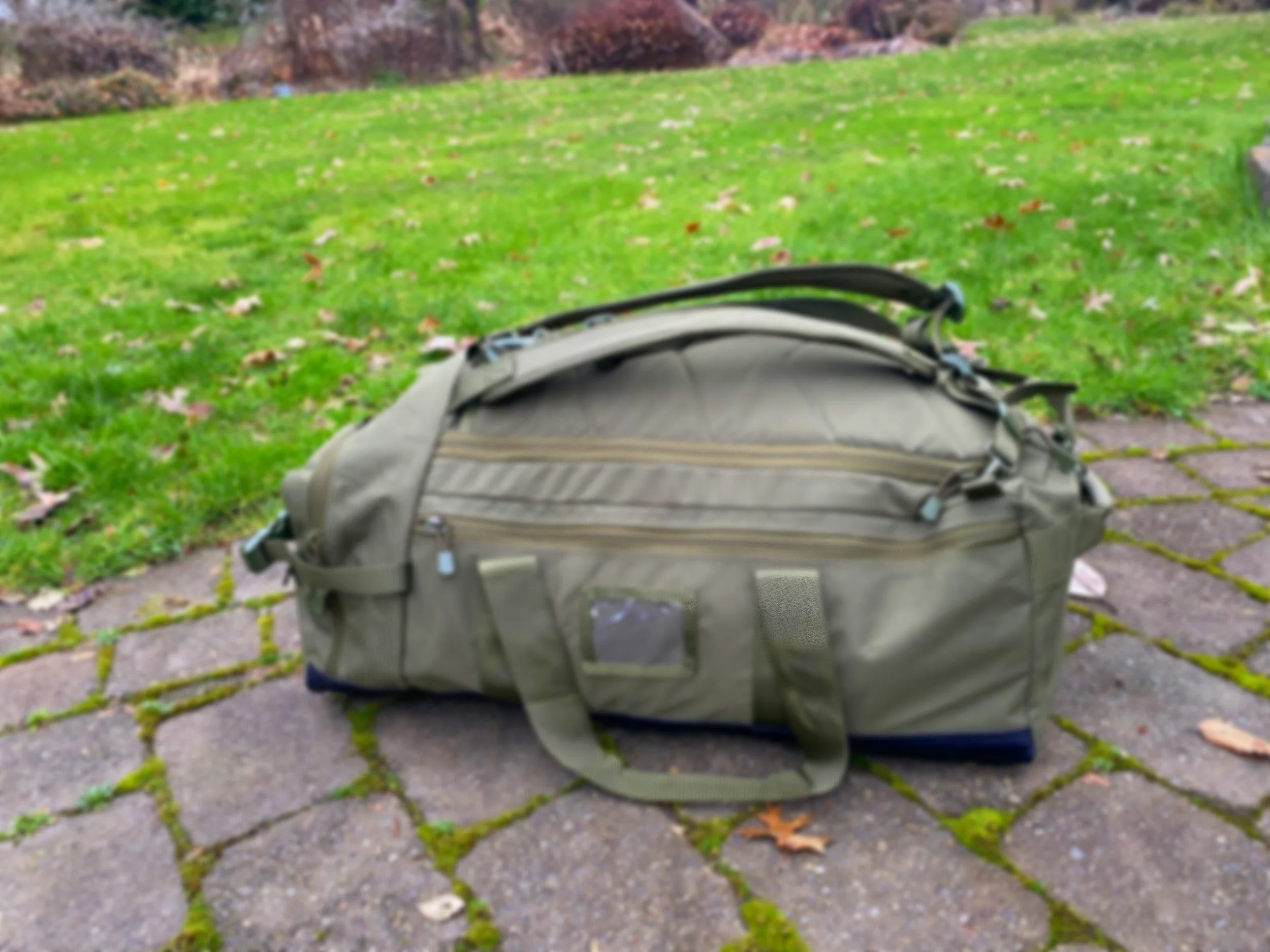First Camp Knife

First Camp Knife
You’re looking for a knife to use on your camping trip. So, what’s the best knife? Well, hold on. I’ve got some questions for you first. Think about these to start developing an idea of what kind of tool you're looking for.
How old is the knife user?
What are they going to be using the knife for?
How much is in the knife budget?
I’ve narrowed down so many of the knife specs to five major design choices. These are what I think about when I’m looking for a knife. The blade steel, grind, shape, tang, and handle material. Each of these will depend on a combination of your application, environment, and preference.
If you look through these lists and still aren't sure check out BladeHQ or KnifeCenter. Do a search and go through all the categories of their filters.
Some other good brand names to check out include: ESEE, BPS, TOPS, Condor, Buck.
Blade Steel
Let’s get looooost iiiinn the knife, baby!
It’s easy to get lost down the rabbit hole of learning about different knife steel compounds and names. Do I want D2, 420, CPM 3V, 420HC, CPM S35VN, 1095, CPM 154, Elmax, A2, 440, Sandvik, 1055, AUS 8, or AUS 10? That’s barely the tip of the iceberg. I could paste in an entire paragraph of blade steel lorem ipsum here.
There is a huge in-depth post on blade steels over at Knife Informer’s Guide to the Best Knife Steel.
For an easier read see KnifeCenter’s What is the Best Knife Steel?
At BladeHQ’s KNIFE STEEL GUIDE there are interactive charts and infographic’s you can learn from too.
Most of the time the thing that I’m concerned with is that the blade is a stainless steel or carbon steel. All steel has carbon in it, this is just about it being a high carbon steel and how prone to rust that makes it (and how sharp you can get it). Steel type will directly relate to the amount of care you need to have in mind.
If the sharpener, brand, and all other things are considered equal:
A high carbon steel blade:
will be more likely to rust
can become sharper than a more stainless steel
can take less time to sharpen
will lose it’s edge quicker
A stainless steel blade:
will be much less likely to rust
can not become as sharp as a high carbon steel
can take more time to sharpen
can hold it’s edge longer
On the rust and corrosion side, a high carbon steel will require more care and attention. Keep dry always, never sheathe wet a blade. A stainless steel is usually corrosion resistant. In the very least it takes much longer for these to start rusting if they do.
Blade Grind
I'm not sure how you can test a grind you’re not familiar with unless you know someone with many types to try.
A.G. Russell has a good little picture and more detailed descriptions. Check that page out.
The two popular grinds you will want to learn for a camp knife is Scandinavian (Scandi) or flat. The main difference is that a Scandi is going to bite into wood fast because of the nature of the bevel grind angle. To bite into wood means just how aggressively it’s going to angle itself into the woodgrain, (maybe I drew a picture and put it here or maybe you can look it up why this happens). Scandi’s are also generally easier to line up, lay flat, and sharpen on a stone because of the prominent angle.
A Scandi is kind of like one of those self-pulling-standing-push-lawn-mowers where it's going to keep pulling you into the wood. If you need to do a shallow cut it will be easy if you have lots of practice or use a knife that has a less aggressive cutting angle. Cutting food with a Scandi is a little awkward.
A flat grind is all around for more general purpose tasks and more control. Most of the other grinds (if you went to AGRK) will carve or cut wood similar to each other. Most of the differences are on the other parts of the blade and not as much difference on the edge geometry as a Scandi.
If you have options available you can try some of these to see which grind might be right for you. Try carving a point on a stick. Try to make some feather sticks to get the feel of what you like more. Make a notch on the other end of the stick where you carved a point and you made a stake!
You’ll see a lot of YouTubers use Scandi’s but in practice I haven’t found that I like it as much as how good it’s been made out to be. But sometimes I will carry a large flat and small Scandi for little whittling, carving, and edge preservation.
It’s up to you!
Blade Shape
Good news, there are fewer shapes then there are types of steels!
Sportsmans Warehouse has some good visuals and simple descriptions on their page about Knife Blade Shapes.
Most on the lists will be clip or drop point. This is the least important of these choices and mostly preference. Having one design over another will only matter if you have a very specific application.
If you're drilling a bow-drill divot a blade tip designed to be on center axis will be the easiest to do it with.
A hunter who is skinning will prefer a thin, wide, and curved bellied knife you can get your finger behind and control easily.
For another quick read, check out KnifeCenter’s Blade Shapes: Explained
BladeHQ has some words about this too: KNIFE BLADE SHAPES GUIDE
Handle
It’s just a handle.
Can I grip it and use fine motor control in gloves?
How about if it gets wet, or it's rain or icey?
Some of these knives in my examples are from northern countries like Norway, Sweden, or Finland so they are designed to be used with gloves and in any condition, usually wet.
Alternatively, some examples from the US might be designed in the desert and be less corrosion resistant, but still just as reliable.
My favorite handle material is Micarta.
“Micarta is a brand name for composites of linen, canvas, paper, fiberglass, carbon fiber, or other fabric in a thermosetting plastic. ”
Thermosetting plastic is a fancy way to say resin.
G10 is a popular grippy alternative to Micarta.
Some handles are straight plastic, some are more rubbery TPE. Plastic handles like Thermorun (Fallkniven) or Kray-Ex (Cold Steel) are very grippy.
You can also find a many more handle materials than I haven’t listed; antler, bone, horn, gemstones, marble, pine cone.
KnifeCenter has this new* article on how to Choose The Best Knife Handle Material.
If you like their writing style, see BladeHQ’s KNIFE HANDLE MATERIALS
If you want to just see what available if you were making your own knife, check out a supplier site like Jantz.
Tang
The last category to go over before we get into the lists is the tang construction.
A tang is the part of the blade material that extends into the handle section of the knife.
For a survival knife the closer we can get to a full tang, the better.
A rat tang has a small amount of metal securing it to the handle.
A 3/4 tang has more than a rat tang but still doesn't extend the full length of the knife. Some of those listed might have more of a 3/4 tang and I just listed it as a rat tang.
A folding knife has no tang, usually.
Here is a screenshot from Morakniv’s Facebook page when they did a little guess who.
Lists below
What I’ve included below are some options where I try to hit a Scandi and flat grind in most price points.
I picked these to choose from because they are well tested, widely available, or are my favs.
In these lists I am using Amazon affiliate links. As an Amazon Associate I earn from qualifying purchases.
less than 25 monies
Morakniv Companion - C, Scandi, Clip Point, Polymer, Rat Tang
Morakniv Robust - C, Scandi, Clip Point, Polymer, Rat Tang
Morakniv Spark - SS, Scandi, Clip Point, Polymer, Rat Tang
Cold Steel Bushman Series Fixed Blade - C, Saber, Clip Point or Straight Back, Folded Tube Steel, Full Tang
Kids - BeaverCraft Kids Knife - SS, Scandi, Drop Point, Wood, Full Tang
Kids - BeaverCraft Whittling Knife for Beginners C1 Kid - C, Scandi, Dull Straight Back, Wood, Rat Tang
Kids - Morakniv Rookie Blunt Tip - SS, Scandi, Dull Clip Point, Wood, Rat Tang
Kids - Opinel Outdoor Junior No. 07 Rounded Tip, Integrated Whistle - (close to not being in this range, between 23-26 monies) - SS, Flat, Dull Clip Point, Plastic, No Tang
less than 50 monies
Morakniv Eldris -SS, Scandi, Clip Point, Polymer, Rat Tang
Morakniv Kansbol - SS, Scandi, Clip Point, Polymer, Rat Tang
ODENWOLF W-FLAT - SS, Flat or Scandi, Straight Back, TPE, Full Tang
Condor Terrasaur - C, Scandi, Plastic, Drop Point, Full Tang
Cudeman Sanabria Mini Bushcraft - SS, Saber, Drop Point, Micarta, Full Tang
Kids - Morakniv Scout 39 - SS, Scandi, Clip Point, Wood, Rat Tang
less than 100 monies
Morakniv Garberg - SS or C, Scandi, Clip Point, Polymer, Full Tang
Gerber Principle - SS, Scandi, Drop Point, Rubber, Full Tang
Terävä Jääkäripuukko 110 - C, Scandi, Straight Back, Rubber, Full Tang
Ontario Hiking Knife - SS, Flat, Drop Point, Micarta, Full Tang
Cold Steel Master Hunter - SS, Flat, Drop Point, Kray-Ex, Full Tang
Cudeman Sanabria Bushcraft - SS, Saber, Drop Point, Micarta, Full Tang
less than 125 monies
Terävä Skrama 200 - C, Scandi x2, Sheepsfoot, Rubber, Full Tang
KA-BAR Becker BK2 - C, Saber, Drop Point, Plastic, Full Tang
KA-BAR Becker BK10 - C, Saber, Clip Point, Plastic, Full Tang
Ontario Black Bird SK-4 - SS, Flat, Spear Point, G10, Full Tang
Ontario Black Bird ML5 - SS, Flat, Spear Point, Micarta, Full Tang
less than 200 monies
Fallkniven F1 - SS, Flat, Drop Point, Thermorun, Full Tang
Ontario Black Bird S35VN - SS, Flat, Spear Point, Micarta, Full Tang











